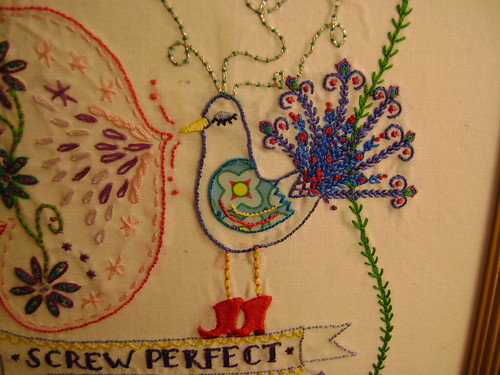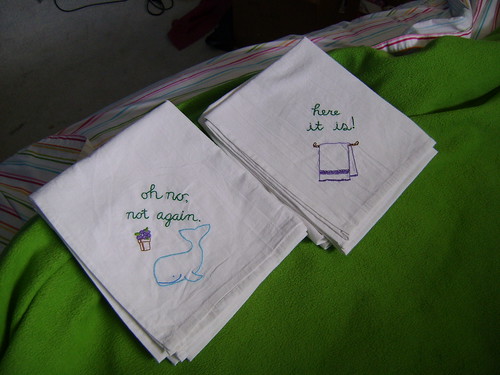I grew up in the suburbs of a major city--one that my family has lived for the last 100 years, ever since arriving in the US. I am so accustomed to living in or near a city that driving out in the country makes me nervous, because I get worried that I have driven too far in the wrong direction. As a result, I grew up without exposure to a lot of the things that my friends have some connection to through their families or childhoods. Canning, hunting, 4-H clubs, and especially the state fair.
Iowa is particularly famous for its
state fair. It is included as an essential event in
1000 Places to See Before You Die, and it even serves as the backdrop for several movies and a
Rogers & Hammerstein musical. You simply can't find anything more state fair-y than the one in Iowa. I went with my husband the first summer we moved to Iowa. I saw many things that were easy to joke about--chocolate-dipped cheesecake on a stick, cheap carnival game prizes, and a hastily-made 4-H poster about ATV safety.
When I entered the pavilions showcasing the entries for arts and crafts competitions, I stopped joking. (I also stopped joking at the
Butter Cow. You do NOT joke about the Butter Cow.)
I was astounded by the level of craftsmanship I saw in a wide variety of categories. There were quilts with squares of photographs copied onto fabric, and wood furniture pieces that looked like they belonged in everyone's fantasy log cabin. The grand prize winning doll house included an attic . . . with a doll house workshop. I saw so much skill and pride in these entries, many of them in areas I didn't even know existed as hobbies. Prize ribbons fluttered everywhere. How many of these treasures have gone unnoticed by people like me, who had never attended a fair before? How many people have these gifts, but aren't aware of the opportunity to showcase them?
I began my regular attendance at Home Ec Workshop about a year later, after I took up embroidery. It was after the state fair was over for the year, and one of the regulars had just gotten back the entries she submitted in the knitting category. Immediately, rumblings began that we should "take over the state fair." I asked my new friend Cassie what they meant. She explained some of the divisions in the craft section, like knitting and embroidery, tended to get very similar entries every year. And every year, the Home Ec regulars talk about submitting entries en masse to shake things up in terms of style and content. Normally, the revolutionary talk peters out after a while until the cycle repeats itself the following August.
Several weeks ago, Cassie completed an embroidery project she had been working on for a while and debated over whether she should submit it to the state fair competition. She then turned to me and said, "If I'm submitting something, then YOU are submitting something too." I made excuses--there was so little time left. What would I submit? I had made so much progress over the year, but what if I wasn't good enough to compete? She responded, "There are two reasons to enter the state fair competition. You can do it to win awards. Or you can do it to just be able to see your work up there, with all the other projects, and know that you did that--and possibly get some good useful critiques from the judges in the process."
I decided to take the plunge and enter something. The great thing about submitting state fair entries is that they make it easy to apply, but the cost of failure is low. They have a website where you can apply electronically. You have to ask for entry tags by July 1, and the cost is $5 for 1-10 entries. That means that, theoretically, you can ask for all 10 entry tags for $5, then decide for yourself how many entries you will actually end up sending. If, in the end, you don't send anything, then all you have lost is $5.
Once you get the entry tags, you label each tag with the division and class for your entry. (The department is already listed). You can only submit one entry per class.
For example, I am planning on submitting an embroidered matzah cover from my great-aunt's stash. In the Fabric & Threads department, I can submit this in the Embroidery division. Under this division, I think it qualifies for the "Embroidered Holiday Decoration" class. Once you fill out the tag, you attach it to your project with a safety pin. You can then either bring it to the fairgrounds on a certain date, or mail it in a package before that date. Once it is there, it will go on display with all the other entries.
I have no idea how my embroidery will be received when it goes up against projects from women who have years of experience. Frankly, I wouldn't be surprised if my matzah cover gets a note from a judge that says, "Which holiday is this for?" I'm just taking this on as a new experience in order to grow as a crafter, to have the pleasure of seeing my work up in public . . . and maybe start a revolution.












































